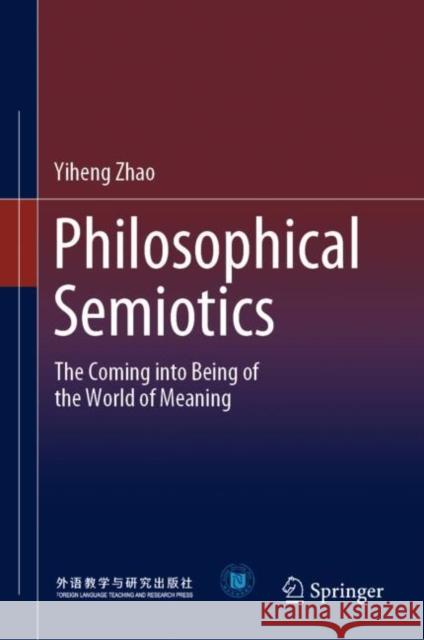Philosophical Semiotics: The Coming Into Being of the World of Meaning » książka
Philosophical Semiotics: The Coming Into Being of the World of Meaning
ISBN-13: 9789811930560 / Angielski / Twarda / 2022
Philosophical Semiotics: The Coming Into Being of the World of Meaning
ISBN-13: 9789811930560 / Angielski / Twarda / 2022
(netto: 186,11 VAT: 5%)
Najniższa cena z 30 dni: 192,74 zł
ok. 20 dni roboczych.
Darmowa dostawa!
This book attempts to solve the question whether semiotics is a methodology as is generally held and if the studies of meaning and the mind can shed light on a series of metaphysical issues, so that the edifice of semiotics could be erected on a philosophical ground. It proposes that a philosophical semiotics is, by necessity, a semiotic phenomenology about the construction of the “world of meaning” by signs, and any discussion about semiotics has to proceed around two core issues: meaning and the mind.This book particularly exemplifies the semiotic connections in various schools of traditional Chinese philosophies. In the “Pre-Imperial Age” (before BC 300), there emerged an abundance of semiotic thinking in China, from Yijing the first sign system that aims to explain everything in the world, to the Namists’s subtle argument about the form of meaning, from the Yin-Yang/five elements of the Han, to the “Things are non-existent while mind is non-non-existent” principle of the Vijñāptimātratāsiddhi School of Buddhism in the Tang, and from the Sudden Revelation of Chan Buddhism to the “Nothing outside the mind” endorsed by the Mindist Confucianism in the Ming. The mighty trend of philosophical heritage provides rich food to our understanding of the form of meaning.











